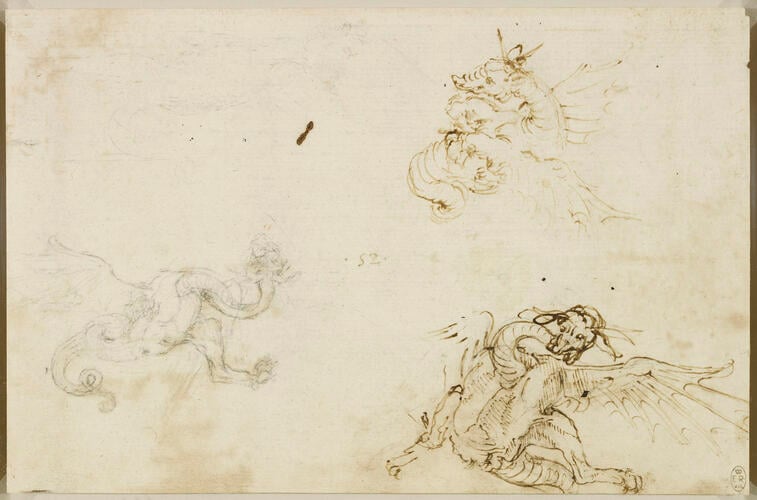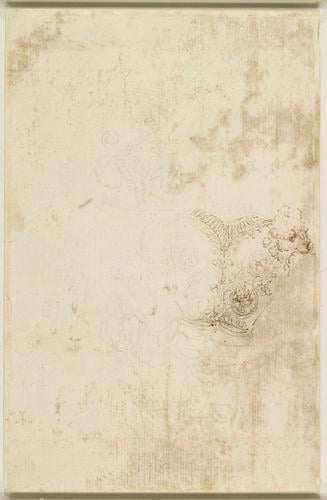-
1 of 253523 objects
Recto: Studies of dragons. Verso: A design for a decorated cuirass c. 1478-80
Recto: Stylus, leadpoint, pen and ink. Verso: Black chalk, partly gone over with pen and ink | 15.9 x 24.3 cm (sheet of paper) | RCIN 912370
-
Studies of a dragon reeling away from the impact of a lance; an almost invisible stylus sketch at upper left shows (with the sheet inverted) the dragon slumped in defeat. The dragons conform to the standard Renaissance advice to create a monster by assembling the parts of different animals, as Leonardo himself recommended:
If you wish to make an animal imagined by you appear
natural, let us say a dragon, take for its head that of a
mastiff or hound, with the eyes of a cat, the ears of a
porcupine, the nose of a greyhound, the brow of a lion,
the temples of an old cock, and the neck of a terrapin.
Here the wings are half-bird, half-bat, the legs are a lion’s, the head a dog’s, the neck and tail like a snake; but the body resembles a plucked chicken, and Leonardo was remarkably uncertain in attaching the different parts to this torso – it is hard to distinguish front from back, or how the beast might look when not under attack.
Text adapted from Leonardo da Vinci: A life in drawing, London, 2018Provenance
Bequeathed to Francesco Melzi; from whose heirs purchased by Pompeo Leoni, c.1582-90; Thomas Howard, 14th Earl of Arundel, by 1630; probably acquired by Charles II; Royal Collection by 1690
-
Creator(s)
Acquirer(s)
-
Medium and techniques
Recto: Stylus, leadpoint, pen and ink. Verso: Black chalk, partly gone over with pen and ink
Measurements
15.9 x 24.3 cm (sheet of paper)

